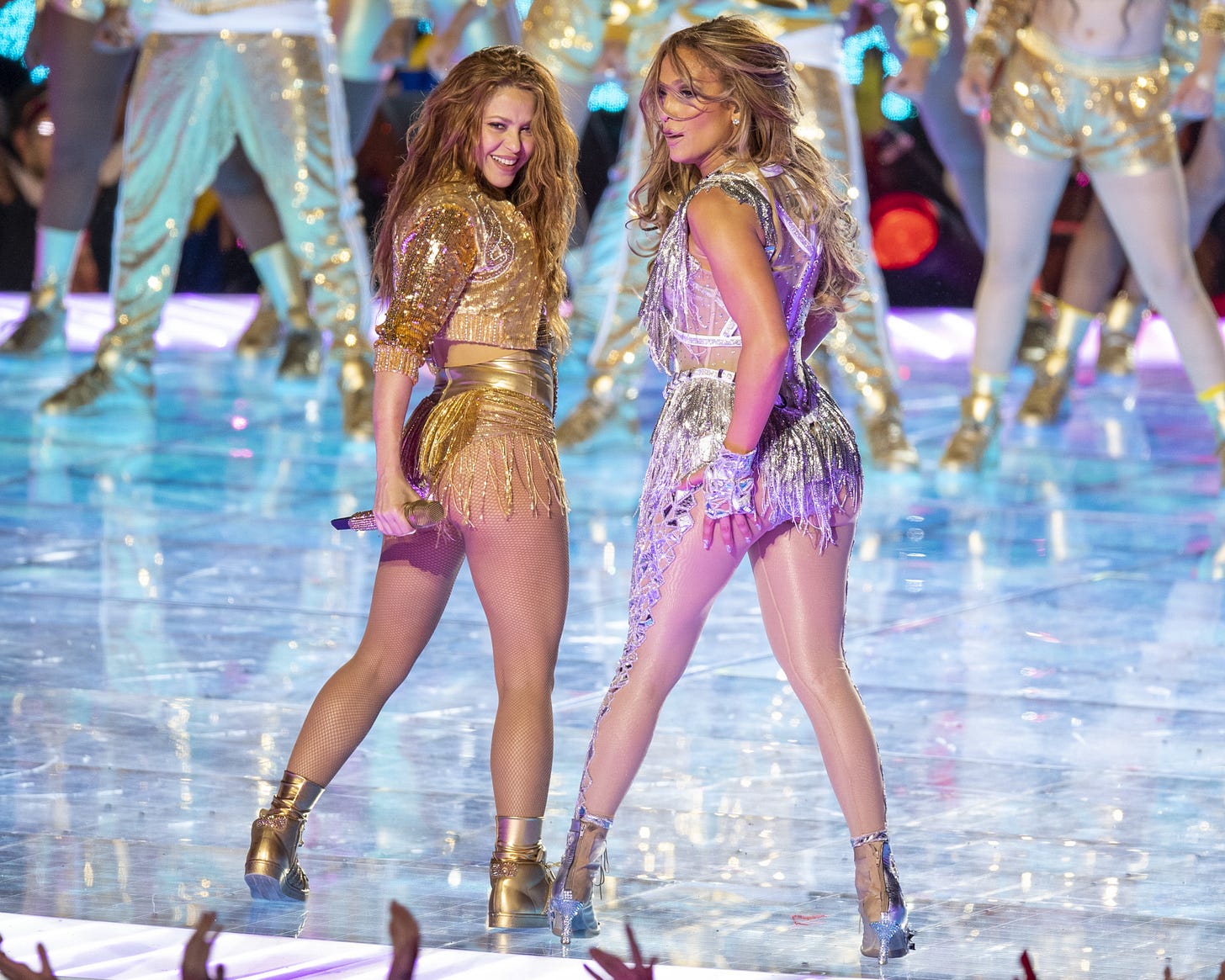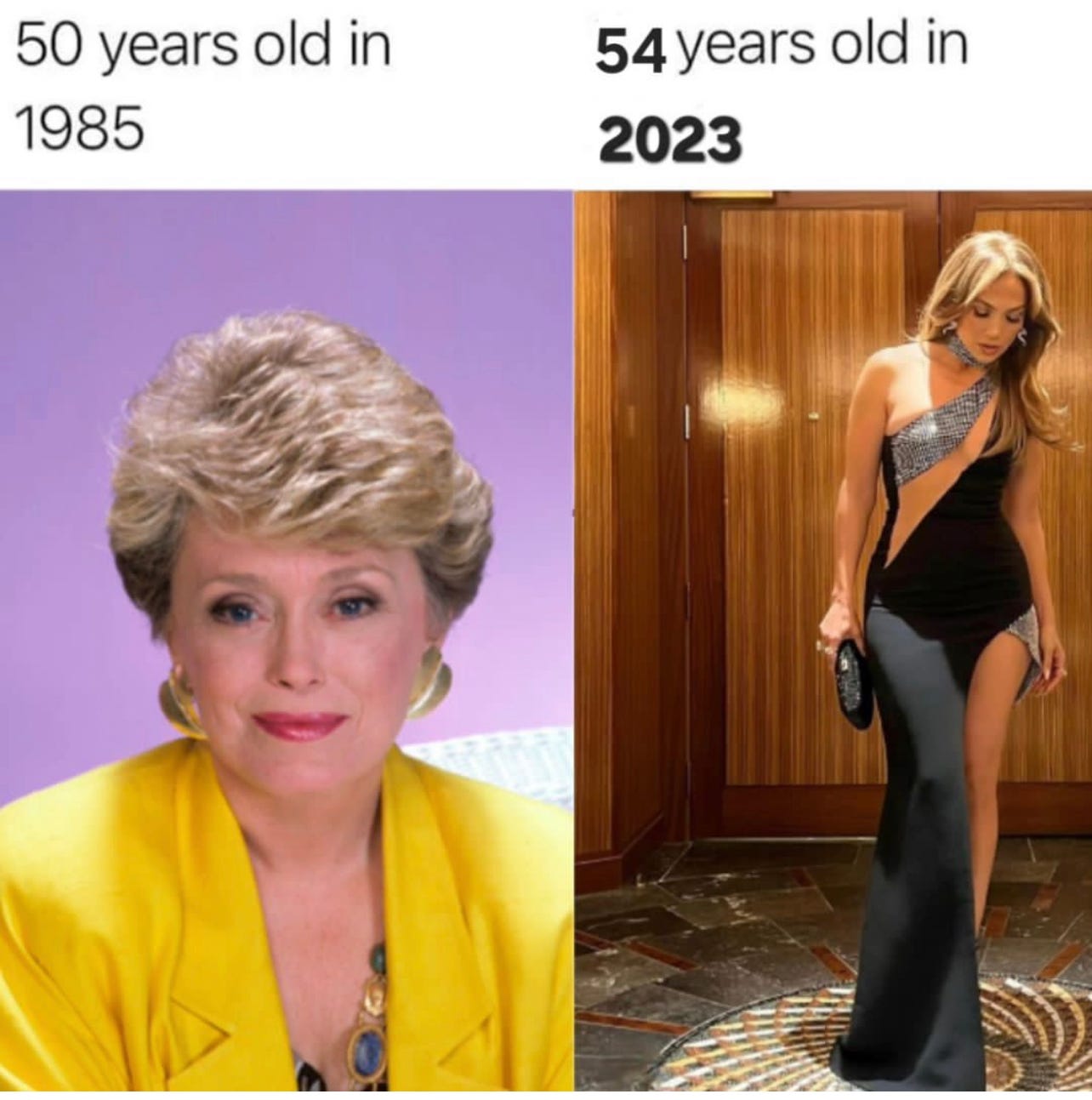When I was a college student, I went to the store to buy my sister a card for her birthday. While searching through the large selection, I came across a card that was supposed to be funny but that left me feeling unsettled and enraged. The card said that after the age of 40 women were like Antarctica–everyone knows where it is but nobody wants to go there.
I thought about Antarctica and its desolate landscapes of snow drifts, a place that is so inhospitable to human life. I was 20 at the time and didn’t understand why women would be compared to this mostly empty continent for any reason. My mother had died at age 39 and would have given anything to get to be an old señora with grandchildren. At the same time, my mom and my tías all dyed their hair and used creams like the old Oil of Olay to keep their skin looking young.
Now as a middle-aged woman myself who is approaching her 52nd birthday, I understand a lot more about the stigma of aging for women. I’d love to think that I’m above it, but I’m not. I feel the pressure and have to work actively to resist the harmful messages of our youth-obsessed culture. As I notice my body changing, I’m tempted by the trappings of staying “forever young” (as if that were an option).
Invisible Women
Four years ago 43-year-old Shakira and 50-year-old Jennifer Lopez performed during the halftime Super Bowl show. The show made headlines for many reasons, but definitely because many people thought they looked amazing for any age. Truly, it seemed that, for them, the hands of time had stood still ever since they were in their twenties.

I remember watching and wondering what they did to achieve such incredible results.
Had all of JLo’s husbands kept her locked in a gym, occasionally feeding her a lettuce leaf or two?
Had Shakira discovered a fountain of liposuction?
The truth turned out to be more mundane, as Ms. Lopez shared the diet and exercise regimen she followed before that fabulous performance. Not surprisingly, it takes a lot of time, money, and effort to look that young when you’re middle-aged, but the alternative is to be Antarctica: invisible.
I joked with a couple of friends last week that if middle-aged women are truly invisible in a culture that strictly values youth, I was going to test out that theory by robbing a bank. Please don’t worry—I haven’t turned to a life of crime in my invisibility, though everyone tells me that it’s not a superpower.
Some middle-aged women find invisibility welcome—they are tired of the male gaze and its unpleasant baggage. Aging can be liberating—no more cat calls or demands to smile. You can dress how you want because no one is paying attention anyway! But others mourn the fact that nobody “sees” them anymore. I remember a former colleague, who had been considered quite the beauty in her youth, agonizing over the fact that she no longer turned heads. She, like many middle-aged women, hated the backhanded compliment that we often hear: “You look wonderful…for your age.”
Forever Young
Scrolling through Instagram a few weeks ago, I came across this picture…
I have to tell you that I find it just a little bit annoying and frustrating that I’m supposed to aspire to look like Jennifer Lopez on the right (which pretty much requires not just all my time and energy but also hitting the genetic jackpot) and not like the great Rue McClanahan of Golden Girls fame on the left. Ms. McClanahan looks wonderful, but she also looks her age.
What’s wrong with looking your age?
Doesn’t looking our age proclaim to the world that we’re still here? That our maturity and wisdom have been hard won?
I remember reading on some social media platform about a woman who asked the doctor injecting her with Botox and lip fillers how much younger she would look after these treatments. The doctor didn’t skip a beat and replied flatly, “You won’t look younger—you’ll look like a woman your age who has had Botox injections and lip fillers.” Ouch! But also kudos to that doctor for being completely honest. I’m sure that woman looked much better than she felt, but she likely also looked like a person who is aging, and that’s exactly what she didn’t want.
Suffering or More Suffering?
Spiritual teacher Richard Rohr says in his book Falling Upward that aging causes us to suffer because we are aware of losing the gifts of youth. We know that our bodies are changing and not for the better: joints begin to ache, recovery from injuries takes longer, our eyes need reading glasses, our hair grays, and our skin wrinkles and sags. These are the unwelcome changes that come with aging, and no matter how much exercise we do or how little we eat, we will still age.
But he stresses that resisting aging causes more suffering–because not only are we still aging, but resistance, in the form of having a younger partner or a new sports car or Botox injections or weight loss regimens or whatever we do to try to stop the hands of time, doesn’t work. We are still growing older, and we know it. And that knowledge on top of aging only increases our suffering.
Years ago, I dated a man who was almost 10 years younger than me. I wasn’t seeking a younger partner; he just happened to be the person I fell for. Our age difference was a great concern to him. In particular, he worried that what made no difference at his age 29 and my age 38 might be a big deal at 40 and 49 or 60 and 69. His only consolation (and mine) was that I didn’t look 38. Thanks to good ole’ melanin and a few extra pounds, I had no wrinkles, and most people didn’t know about our significant age difference unless we told them.
The thing is that I was still 10 years older, and that age gap would never change. We both knew this, and his anxiety quickly became my anxiety. I became preoccupied with futile attempts at recapturing my youth.
And that, my dear readers, is how I came to live the truth of Rohr’s teaching and increased my own suffering. It was a terrible time—there are few things worse than betraying yourself for the sake of keeping a relationship. I hate even to write about it because I remember all the fear and all the self-loathing that were my constant companions back then.
What I love about the wise Rohr is that he does provide an answer to ending this suffering, and the answer is simple though not easy. The key, he says, is to grieve the gifts of youth and to see and accept the many gifts of aging. The poet Robert Frost put it this way:
The afternoon knows what the morning never expected.
Afternoon Life
Ever since I read years ago that we should grieve the gifts of youth, I have wondered how to do this exactly. To be honest, I am still not sure. I still revel in the joy of no more menstrual periods, street harassment, and salon visits to dye my hair. I have found it easier to focus on some of the more abstract gifts of aging that I have experienced:
Identity—in my youth, I struggled so much with cultural alienation and self-imposed assimilation. These days I’m very comfortable in my brown, bicultural skin and reckon with my internalized racism.
Solitude—I wasted years of energy on seeking a romantic relationship without noticing the other kinds of love all around me or even stopping to ask if I was really my best self in a romantic relationship. These days, I happily spend a Friday evening exploring a new street food stand by myself and coming home to my kitties. Looking forward to turning into an old swamp witch surrounded by cats, books, and creative, interesting people. Maybe I’ll even solve mysteries in my spare time!
Vocation—This was a source of angst for me for years. What should I do with my one life? Now I’ve come to understand that my vocation is as a writer, but I don’t want to do this job full-time. The reason I love it is because I have to find stolen moments, weekends, and random times to work on it, almost like I’m having an affair. I didn’t arrive at this realization till I was 43. My day job is not my vocation, but it pays the bills nicely, and I’m grateful for it.
Saying No—A favorite writer once said that there’s a difference between acceptance and resignation. Resignation lacks peace, tranquility, release. I’ve come to accept my aging body in the sense that I no longer dye my hair or purchase age-defying products. I’ve given up the illusion of any 51-year-old being young or growing more attractive by societal standards. I also recognize that my energy is more limited as I age and, therefore, needs to be spent more carefully, so I’ve learned to say no to people, places, and things that seek to claim my time and energy but aren’t life-giving in any way.
Liberation—Truth be told, when I was a young woman, I was drawn to faith because of the certainty it promised (the way it was presented to me, anyway). But patriarchal, racist, and exclusive religion did not liberate me in any way. I just exchanged old shackles for new ones. Aging has made me more open to seeking God outside of the designated spaces, and I have found real freedom and joy in faith. Aging has liberated me from the structures in which I never really fit in anyway.
And lastly, dear readers, I embrace aging these days because the alternative to aging is not being alive at all! I hope you are well and embracing the place where life finds you right now. You look fabulous for your age.
Cheers,
Karen






This was great, Karen. Old swamp witches unite.
I love this and I agree! I have never felt so happy in my skin! I am grey, I am 58 and I am super happy.